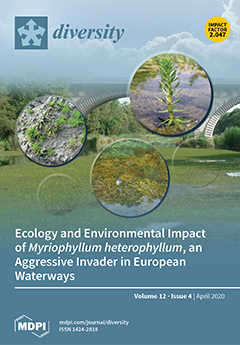Glyphosate and copper-based herbicides/fungicides affect non-target organisms, and these incidental exposures can impact microbial populations. In this study, glyphosate resistance was found in the historical collection of
S. cerevisiae, which was collected over the last century, but only in yeast isolated after
[...] Read more.
Glyphosate and copper-based herbicides/fungicides affect non-target organisms, and these incidental exposures can impact microbial populations. In this study, glyphosate resistance was found in the historical collection of
S. cerevisiae, which was collected over the last century, but only in yeast isolated after the introduction of glyphosate. Although herbicide application was not recorded, the highest glyphosate-resistant
S. cerevisiae were isolated from agricultural sites. In an effort to assess glyphosate resistance and impact on non-target microorganisms, different yeast species were harvested from 15 areas with known herbicidal histories, including an organic farm, conventional farm, remediated coal mine, suburban locations, state park, and a national forest. Yeast representing 23 genera were isolated from 237 samples of plant, soil, spontaneous fermentation, nut, flower, fruit, feces, and tree material samples.
Saccharomyces,
Candida,
Metschnikowia,
Kluyveromyces,
Hanseniaspora, and
Pichia were other genera commonly found across our sampled environments. Managed areas had less species diversity, and at the brewery only
Saccharomyces and
Pichia were isolated. A conventional farm growing RoundUp Ready™ corn had the lowest phylogenetic diversity and the highest glyphosate resistance. The mine was sprayed with multiple herbicides including a commercial formulation of glyphosate; however, the
S. cerevisiae did not have elevated glyphosate resistance. In contrast to the conventional farm, the mine was exposed to glyphosate only one year prior to sample isolation. Glyphosate resistance is an example of the anthropogenic selection of nontarget organisms.
Full article





